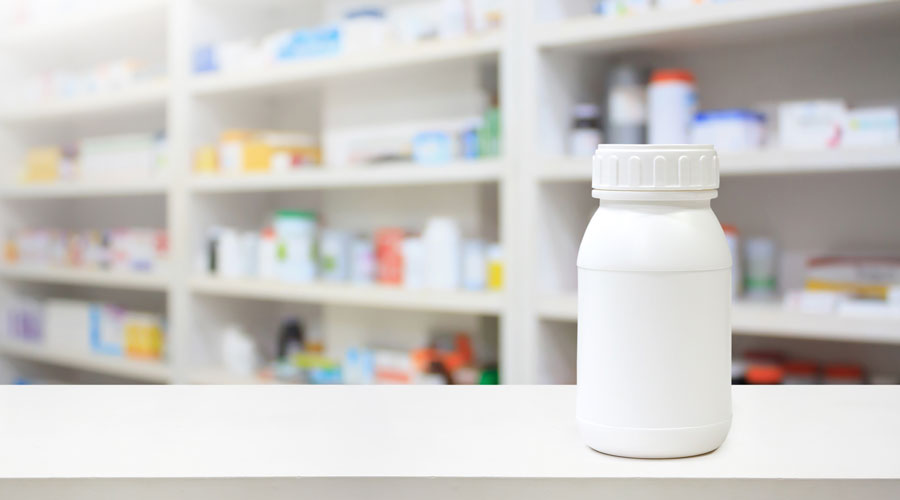Inventory is a pharmacy’s most valuable asset and a crucial line item on your balance sheet. Knowing how to properly value your inventory for accounting purposes can help you better manage your financial records and optimize your tax deductions.
What is an inventory valuation method?
Inventory valuation is assigning a cost to your inventory at the end of an accounting period. Calculating the value of your merchandise isn’t as simple as adding up all your receipts. Prices fluctuate — what you paid $10 for yesterday might cost you $12 today. Because of this, you have to be intentional about how you determine the value of your purchases. The method you choose could affect how profits appear on paper, how you stock your shelves, and whether your merchandise will expire before it’s sold.
The most common inventory valuation method are known as FIFO, LIFO, and FEFO. Here’s what you need to know about each before deciding the right method for your pharmacy.
What is FIFO?
Under the first in, first out method of inventory accounting, you start with the cost associated with your oldest inventory to calculate the cost of goods sold.
It’s considered to be a trustworthy method of inventory accounting. It also results in less wasted inventory for companies that are following the spirit of the method and prioritizing moving older inventory out first.
Because the products remaining on your shelves are newer and closely reflect their market value, you’ll have a more accurate view of pharmacy finances on your balance sheet.
Calculating cost of goods with FIFO
This example will show you how to calculate the cost of goods sold over a set period using the first in, first out method.
- In January, a pharmacy bought 100 candy bars for $1 each
- In February, a pharmacy bought 150 candy bars for $1.25 each
- In March, a pharmacy bought 150 candy bars for $1.50 each
From January to March, the pharmacy sold 300 candy bars out of a stock for 400. To calculate the cost of goods sold using FIFO, you’ll start with the older costs. The calculation will look something like this:
100 x $1 = $100
150 x $1.25 = $187.50
50 x $1.50 = $75
Adding up those three numbers, the total cost of goods sold would be $362.50, which the pharmacy can then use to determine your overall profit on the candy bars.
The inventory they have left in stock is worth $150.
Disadvantages of using FIFO
Although FIFO is the most commonly used method of accounting for inventory, it’s not perfect.
The biggest disadvantage is that it may artificially inflate profits by leaving the newer (and frequently more expensive) items on the balance sheet while assigning lower values to the older, sold inventory. This problem is especially noticeable in periods of high inflation.
Higher profits on paper aren’t actually a good thing for your pharmacy. Come tax season, the IRS will see that high profit and expect a bigger cut, increasing your tax burden.
What is LIFO?
When using the last in, first out (LIFO) method, businesses expense the products that have been purchased most recently.
It’s an acceptable method to account for inventory in the United States and is covered by the generally accepted accounting principles (GAAP). However, the International Financial Reporting Standards forbids its use, which means it’s not used by companies outside the US. Even in the US, it’s less commonly used than FIFO.
LIFO accounting will often make it look like you have higher costs and lower income, which can help to reduce your pharmacy’s taxable income. However, if prices are falling, it will do the opposite.
It’s generally assumed that businesses use FIFO. If a business wants to use LIFO instead, they have to apply to the IRS, and if they want to change back to FIFO, they have to get special approval.
Calculating cost of goods with LIFO
Let’s return to the candy bar example from the previous section. This pharmacy bought the same candy bars at the same prices, and also sold 300 out of 400 candy bars over the same period of time. However, this pharmacy uses LIFO to calculate the cost of goods sold instead of FIFO. Their calculation will look like this:
150 x $1.50 = $225
150 x $1.25 = $187.50
Their total cost of goods is $412.50, significantly higher than the $362.50 calculated under the FIFO method. And the inventory they have left in stock is worth $100.
Disadvantages of LIFO
While you may see a tax advantage when using LIFO, you also have to report those lower profits to any investors or shareholders you have. That lower profit may also come back to bite you if you seek additional funding for your pharmacy.
LIFO is also not recommended for companies that stock perishable products because there’s a much higher risk that products will expire on the shelves.
What is FEFO?
A variation of the FIFO method is FEFO — first expired, first out. This doesn’t change how you value your cost of goods sold, but it does change your approach to stock rotation.
When using FIFO, businesses prioritize selling stock by how old it is, but when using FEFO, you prioritize by expiration date. It’s a subtle difference, but it allows you to ensure you’re getting fresh products to patients while minimizing the costs associated with expiring inventory.
FEFO is an especially good strategy for businesses like pharmacies, which have lots of products with strict expiration dates.
Disadvantages of FEFO
While FEFO is the best way to ensure you’re selling your patients a quality product, it comes with one big caveat: it’s more complicated to implement.
You have to keep careful track of all your inventory in order to know the expiration dates and take the time to pull older products to the front of the shelves. For most small operations, this will be a time-consuming endeavor.
In order to implement an effective FEFO strategy, it is critical to have an inventory tracking system that logs expiration. Your software should be able to alert you when products in your practice are getting closer to their expiration dates so you can prioritize getting them off the shelves and into your patients’ baskets.
A Member-Owned Company Serving Independent Pharmacies
PBA Health is dedicated to helping independent pharmacies reach their full potential on the buy-side of their business. Founded and owned by pharmacists, PBA Health serves independent pharmacies with group purchasing services, wholesaler contract negotiations, proprietary purchasing tools, and more.
An HDA member, PBA Health operates its own NABP-accredited secondary wholesaler with more than 6,000 SKUs, including brands, generics, narcotics CII-CV, cold-storage products, and over-the-counter (OTC) products — offering the lowest prices in the secondary market.












